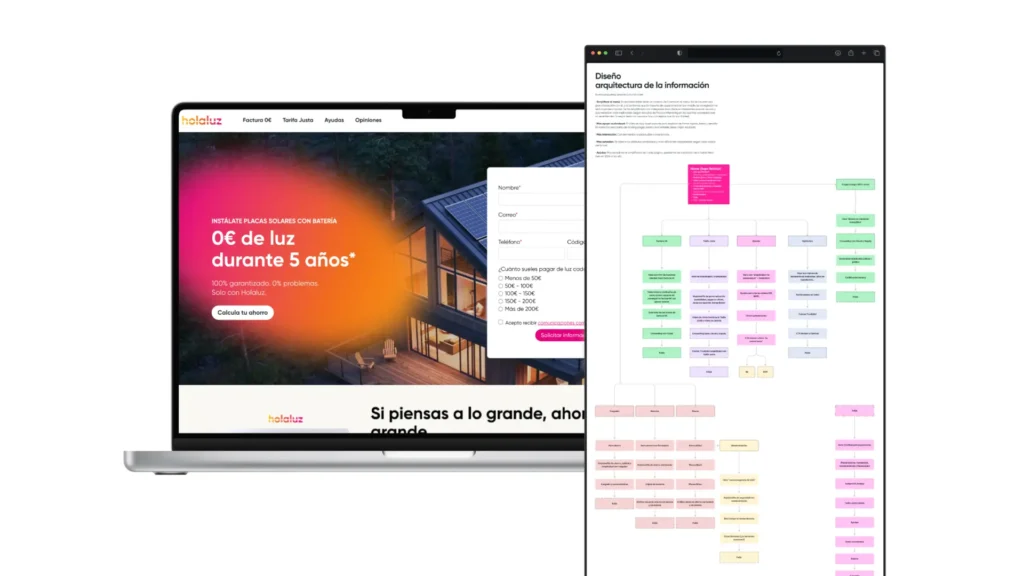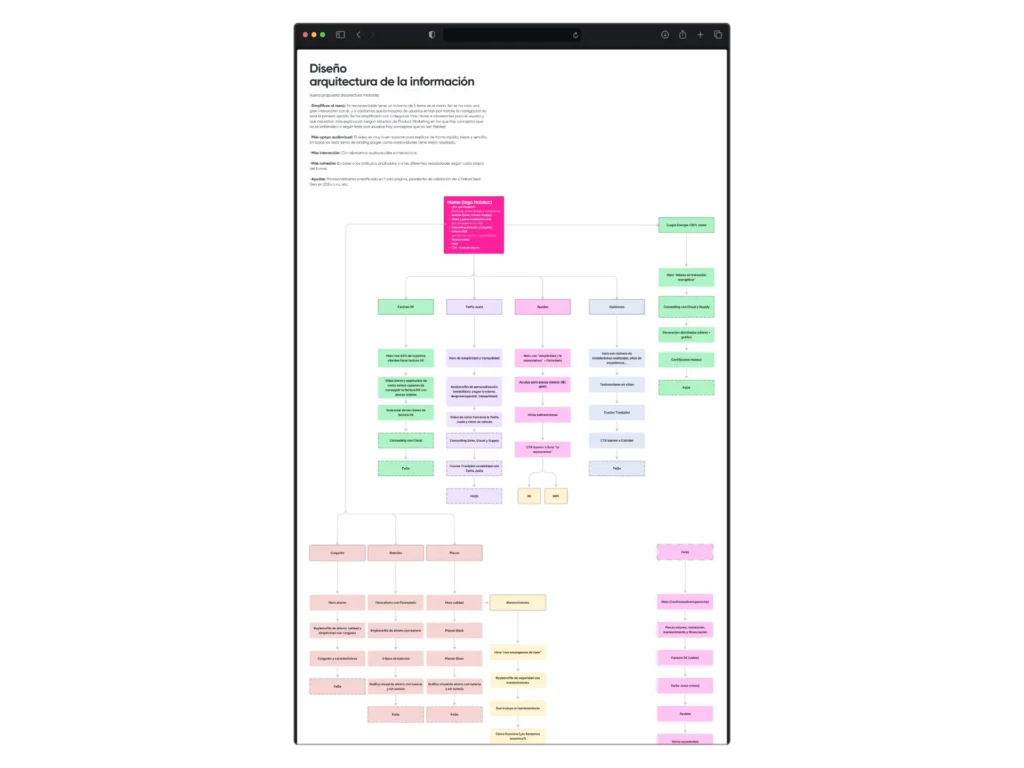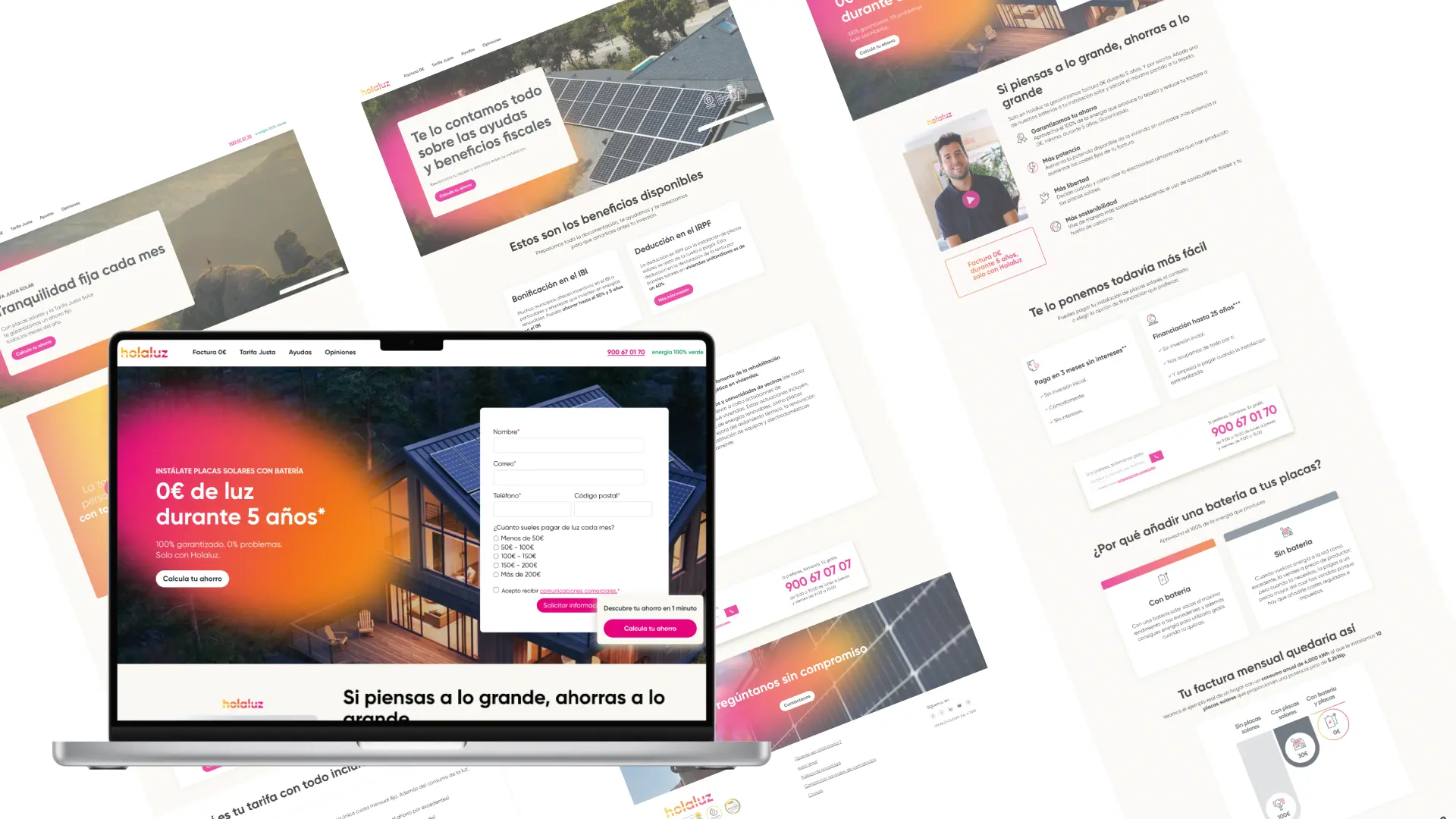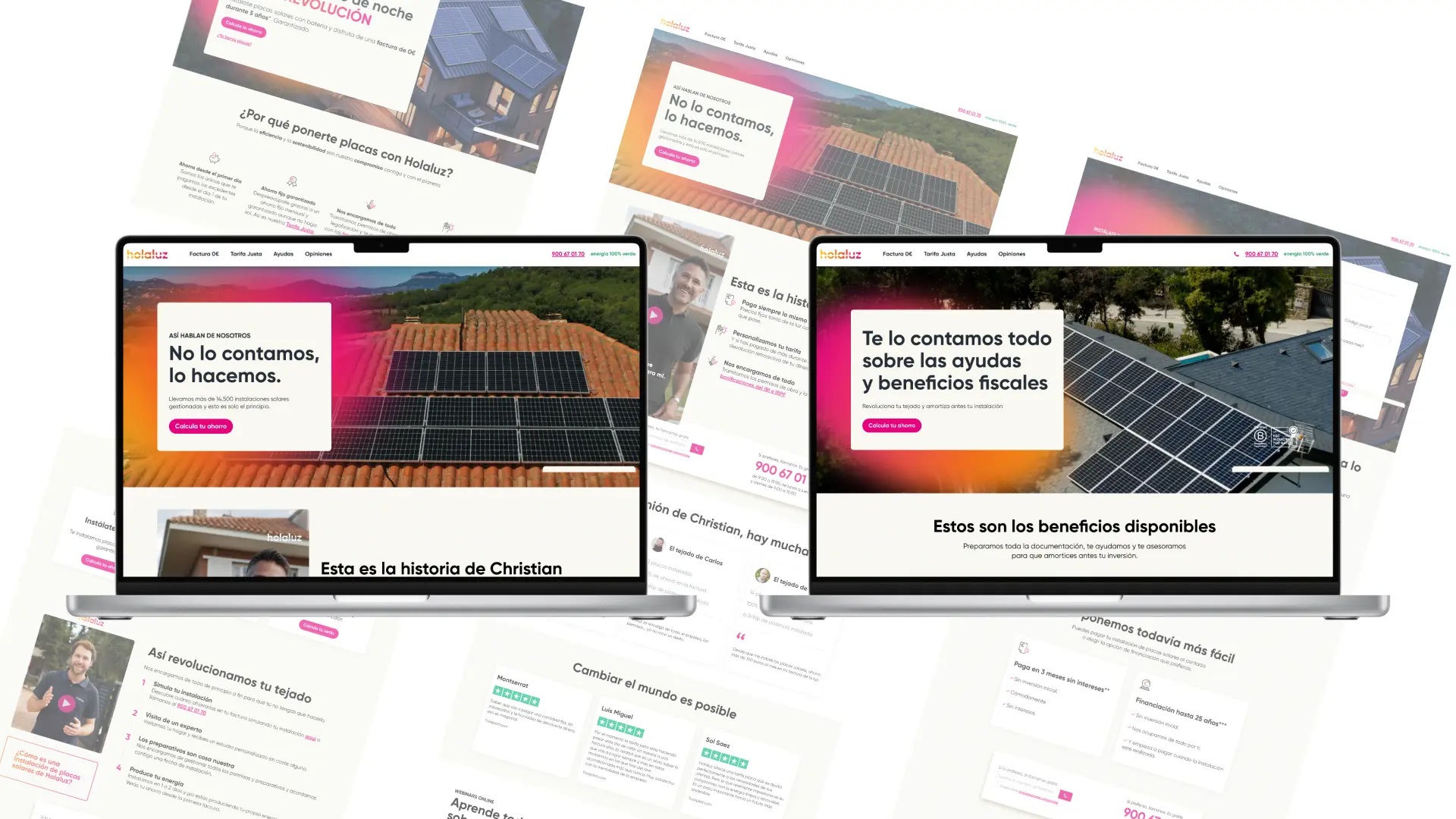The energy sector presents unique challenges in how users perceive products and services. Through research conducted between 2023 and 2024, critical areas for improvement were identified in the digital experience to build trust and enhance understanding of the value proposition.
2023 REBRANDING:
💸 A strategic rebranding effort at Holaluz emphasized key attributes such as savings, quality, personalization, and simplicity.
🕵️♀️ Research focused on identifying these attributes in users’ perceptions through interviews and concept testing.
2024 RESEARCH:
🔎 Insights were gathered from users who chose competitors over our product. Key barriers included distrust and perceived high pricing.
🖥️ Interviews conducted in October-November included online surveys with incentives, gathering 132 complete responses.
These studies revealed that a confusing digital experience with excessive information on a single page negatively impacted the product’s perception.






